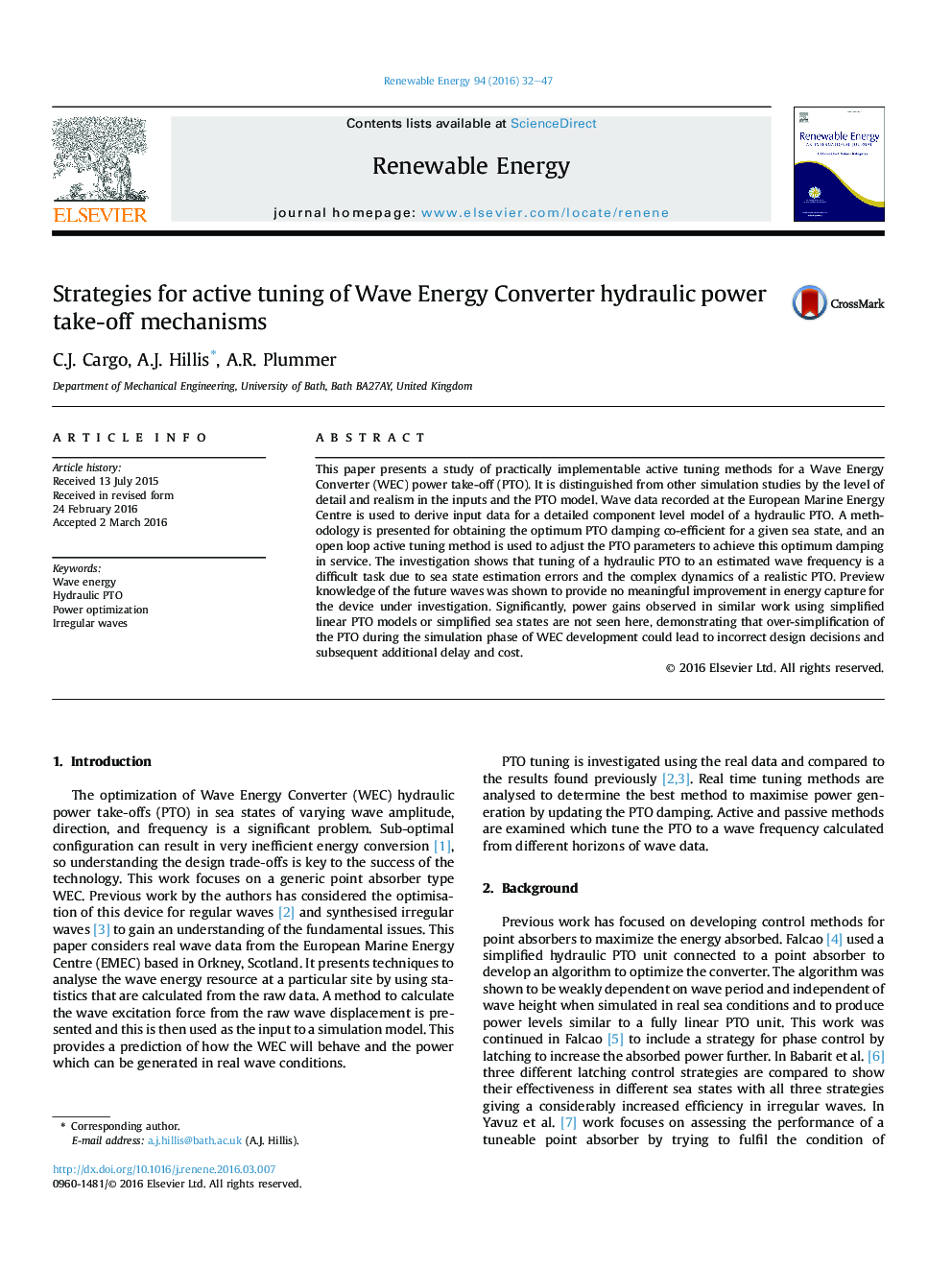| Article ID | Journal | Published Year | Pages | File Type |
|---|---|---|---|---|
| 6765735 | Renewable Energy | 2016 | 16 Pages |
Abstract
This paper presents a study of practically implementable active tuning methods for a Wave Energy Converter (WEC) power take-off (PTO). It is distinguished from other simulation studies by the level of detail and realism in the inputs and the PTO model. Wave data recorded at the European Marine Energy Centre is used to derive input data for a detailed component level model of a hydraulic PTO. A methodology is presented for obtaining the optimum PTO damping co-efficient for a given sea state, and an open loop active tuning method is used to adjust the PTO parameters to achieve this optimum damping in service. The investigation shows that tuning of a hydraulic PTO to an estimated wave frequency is a difficult task due to sea state estimation errors and the complex dynamics of a realistic PTO. Preview knowledge of the future waves was shown to provide no meaningful improvement in energy capture for the device under investigation. Significantly, power gains observed in similar work using simplified linear PTO models or simplified sea states are not seen here, demonstrating that over-simplification of the PTO during the simulation phase of WEC development could lead to incorrect design decisions and subsequent additional delay and cost.
Related Topics
Physical Sciences and Engineering
Energy
Renewable Energy, Sustainability and the Environment
Authors
C.J. Cargo, A.J. Hillis, A.R. Plummer,
